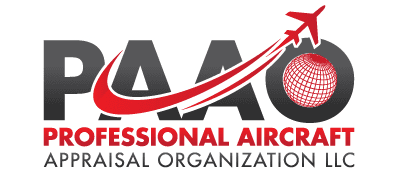Download or Read the Report Below
Below, you’ll find our report “The Top 3 Purchasing Mistakes People Make When Buying an Aircraft.” If you’d like to download this report and read it later, fill out the form below and we’ll send you a copy.
The Top 3 Purchasing Mistakes People Make When Buying an Aircraft
[And How To Avoid Them]
Purchasing any aircraft can be complicated and confusing.
Purchasing any aircraft can be complicated and confusing, especially when looking at ads or viewing the aircraft directly.
Brokers and dealers can be intimidating and they can always make a buyer feel as though they are getting a GREAT deal when the opposite is really the case.
Over the years, I have worked with a number of aircraft buyers at various stages of their purchase process and several common factors seem to play out over and over that impact their decision making.
There are many issues and pitfalls to be sure and identifying all of them would require more space than I have here.
Today, I want to focus on the top three purchasing mistakes along with a few strategies that will help ensure you make an informed purchasing decision.
Mistake #1
Understand the aircraft's mission
I am amazed at how many buyers tend to focus more on their wallet (an important factor to be sure) than their objectives.
When I talk about the aircraft’s “mission”, I am talking about the number of passengers, how far to you plan to fly, under what conditions (IFR or VFR) and how much additional weight (read luggage and “other items”) you plan to take.
For example, the needs of a freshly minted private pilot building time for their IFR rating will be very different than those who plan on taking the family along for a weekend outing hundreds of miles away or for business use.

If you plan on operating in the western half of the U.S., turbo-charging should be a consideration for piston buyers.
Turbine aircraft present a completely different set of parameters to consider because of their dispatch capability and so forth.
However NOT understanding the typical mission to be flown leads to the second factor.
Mistake #2
Understand what you can afford
Buyers of all types generally look at how much they can afford (or borrow) and then go immediately to the publications to see what aircraft meets that number.
Or, they look on-line at pricing guide X or Y to see what fits this figure.
These approaches can lead to “over-buying” or “under-buying” an aircraft. Both situations can lead to an unpleasant ownership experience.
Believe it or not, the most commonly overlooked item is the aircraft’s market value.
While the aircraft’s market value is an important item to be sure, many buyers either have no idea how to determine the aircraft’s value or they believe that a value guide is the answer.
I encounter this situation routinely when a buyer has casually offered $X without looking at the aircraft or completing any field visit.
Here are a few points to keep in mind when attempting to determine an aircraft’s market value.
1. THERE ARE NO PUBLIC DATABASES OF AIRCRAFT SELLING PRICES
If you were buying a piece of real estate you would most likely use a real estate appraiser who, at some point, would head down to the local courthouse and see what one or more similar pieces of real estate in the area sold for.
In the case of aircraft, there is no database of selling prices of aircraft and if there were, it would be somewhat irrelevant due to the various factors involved such as airframe time, engine time since overhaul, the type of overhaul, the type of equipment in the aircraft, any damage history, and so forth.
Without knowing specifics of the aircraft, the sales data would not be helpful in and of itself.
2. ALL VALUE GUIDES ARE IN THE PUBLISHING BUSINESS NOT THE AIRCRAFT APPRAISAL BUSINESS
Value guides publish whatever information is provided to them. There is little to no validation or verification of this information.
Also understand that guides generate their revenues from advertising and subscriptions.
If subscribers or advertisers do not agree with or like the information being published, then they may stop subscribing or advertising.
By their own disclaimers, the publications warn against using their information for the purposes of appraising a specific aircraft and recommend the use of a professional aircraft appraiser.
Not understanding what is included in the “Average Retail” model and how to make adjustments to this model will lead the unexperienced evaluator down an erroneous path.
3. Advertised asking prices have little to no relationship with market value
Owners and sellers have different strategies and reasons for their advertised price.
As an example, some owners will look at similar ads and price their aircraft accordingly with an “adjustment” because, you know, it is THEIR aircraft which must be superior to anything else being advertised.
The reality is that all of the advertised aircraft are excessively priced for what they really are and the current market.
Mistake #3
Know when to ask for help
Over the years, situations have developed with my banking clients wherein I am asked to appraise an aircraft for financing purposes.
The price has already been negotiated and in some cases the prebuy inspection has been completed or is underway.
In contentious cases where there is a large difference between the appraised value of the aircraft and the purchase price, I will sometimes ask the buyer how they arrived at the number that they did. In other cases, the seller asserts that my analysis is incorrect with very little supporting information (that shouldbe a clue).
Usually, the agreed upon price was the best number the buyer could negotiate and I end up explaining to the buyer that the aircraft was excessively priced to begin with, relative to the market and the attributes of the aircraft itself.
It would have helped the buyer’s situation immensely to have an appraisal report in hand BEFORE negotiating the purchase price or the prebuy inspection.
f the buyer had an appraisal in-hand, it may have helped them determine if they wanted to move forward with that aircraft and, if so, how they wanted to move forward.
Regardless, having a trained, experienced, professional to provide an impartial and unbiased opinion would have strengthened their negotiating position.
Knowledge is power.
Those of us involved in aviation tend to have “A” type personalities and want to “go it alone” when making an aircraft purchase. After all, how tough can it be?
If a buyer makes the first two mistakes, then they have likely avoided doing the necessary research (feeling they have done so already) and it can be easy to self-justify any decisions.
In this scenario, the process used to find and purchase the aircraft was haphazard from the start. When faced with the aircraft they thought would be “the one”, it is not quite “as advertised” and they tend to overlook the aircraft’s “warts”.
The next choices can become expensive:
- Pull the plug on this aircraft and start all over
- Try to make the best of this purchase, hold their nose and hope for the best
It simply does not have to be this way!
If you are serous about your purchase and your budget, it may be worth a telephone call or email to find out more.





